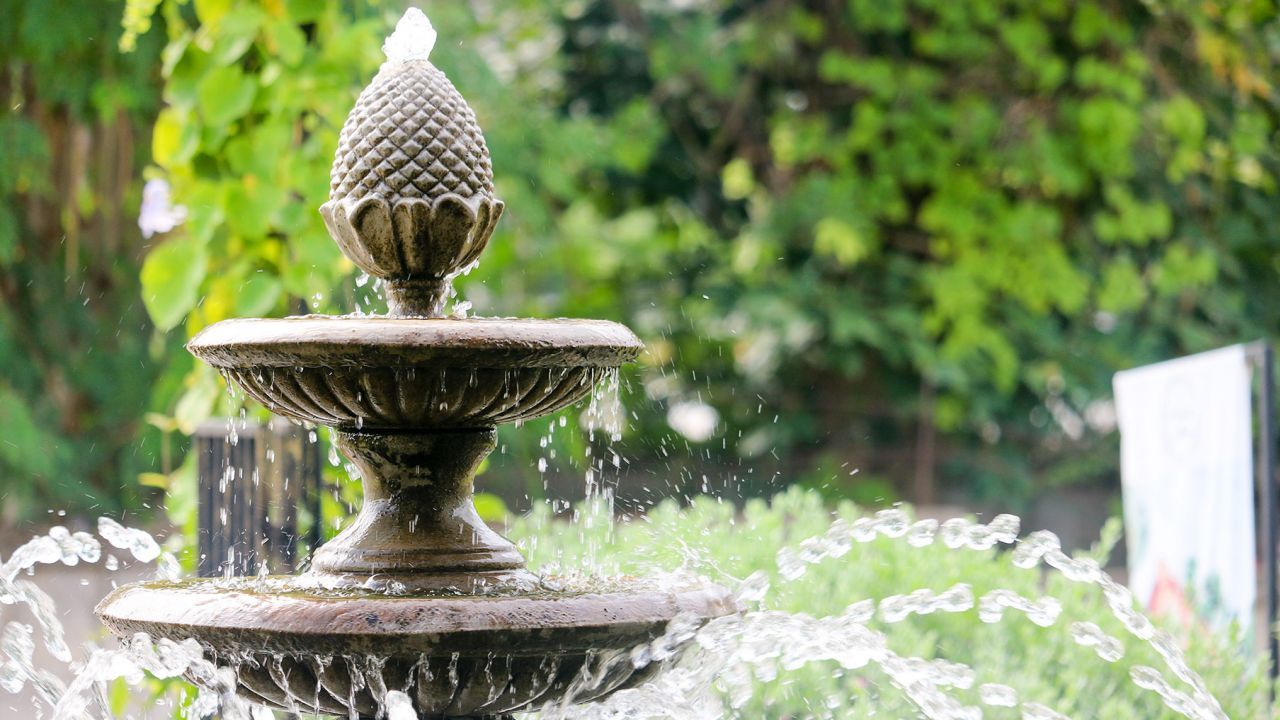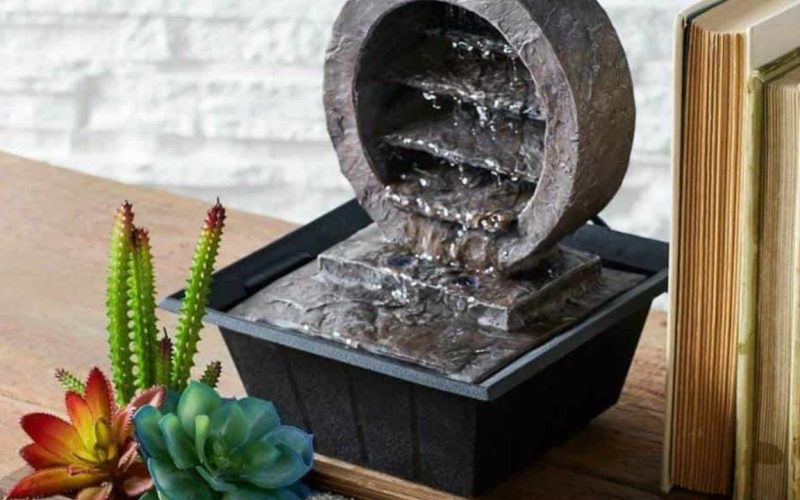Water fountains for home are becoming increasingly popular as both aesthetic and functional additions to living spaces. They provide a calming and soothing ambiance, enhance the décor, and can even improve indoor air quality. In this article, we will explore the basic functionality of water fountains for home, the ideal places to install them, and the necessary periodic maintenance to keep them running smoothly.
Basic functionality of water fountains for home
Water fountains for home operate on a simple principle of water circulation. Here’s a breakdown of how they work:
- Reservoir: The base of the fountain contains a reservoir that holds the water. This reservoir can vary in size depending on the design and intended use of the fountain.
- Pump: A submersible pump located within the reservoir is the heart of the fountain. The pump draws water from the reservoir and pushes it up through a tube or spout, creating the flow of water. Most home water fountains come with adjustable pumps that allow you to control the flow rate.
- Tubing and spouts: Water is transported from the reservoir to the top of the fountain through tubing. From there, it flows down over a series of levels or surfaces, creating the desired visual and auditory effects. The design of these levels can range from simple spouts to intricate cascading patterns.
- Filtration: Many water fountains for home come with built-in filtration systems that help keep the water clean by removing debris and impurities. This is especially important for outdoor fountains where leaves, dirt, and other particles can accumulate.
- Lighting: Some home water fountains include built-in lighting features, such as LED lights, to enhance their visual appeal, especially in low-light settings. The lights can create a mesmerizing effect as they illuminate the flowing water.
Ideal placement for water fountains for home
Choosing the right location for your water fountain is crucial to maximizing its benefits. Here are some ideal places to consider:
- Living room: Placing a water fountain in the living room can serve as a stunning focal point and conversation starter. It adds a touch of elegance and creates a tranquil atmosphere, making the space more inviting and relaxing.
- Entryway: An entryway or foyer is an excellent location for a water fountain. It provides a welcoming first impression for guests and sets a calming tone as they enter your home. A small tabletop fountain or a wall-mounted fountain can be ideal for this space.
- Garden or patio: Outdoor water fountains for home can transform your garden or patio into a serene retreat. The sound of flowing water enhances the natural surroundings and creates a peaceful environment. Consider placing a fountain near seating areas or among your plants and flowers.
- Home office: A water fountain in your home office can help reduce stress and increase productivity. The gentle sound of flowing water can mask distracting noises and create a calming work environment. Desktop fountains are a popular choice for home offices due to their compact size.
- Bedroom: Placing a water fountain in the bedroom can contribute to better sleep quality. The soothing sound of water can help you relax and fall asleep more easily. Ensure the fountain is quiet enough not to disturb your rest, and avoid placing it directly next to your bed to prevent any potential splashing.

Periodic maintenance of water fountains for home
Regular maintenance is essential to keep your water fountain functioning properly and looking its best. Here’s a guide to maintaining your water fountain:
- Cleaning the fountain: Clean the fountain regularly to prevent the buildup of algae, mineral deposits, and debris. Use a soft brush or cloth to scrub the surfaces and remove any dirt. For stubborn deposits, a mixture of vinegar and water can be effective.
- Changing the water: Replace the water in the fountain every few weeks, or more often if you notice it becoming dirty. Stagnant water can develop unpleasant odors and become a breeding ground for bacteria and algae. Use distilled water to minimize mineral buildup.
- Maintaining the pump: The pump is a critical component of your water fountain. Clean the pump periodically by disassembling it according to the manufacturer’s instructions and removing any debris or buildup. Ensure the pump’s intake is not blocked and that it operates smoothly.
- Inspecting the tubing and spouts: Check the tubing and spouts for any blockages or damage. Clean the tubing with a small brush if necessary, and ensure the water flows freely through all parts of the fountain.
- Filter replacement: If your fountain has a filtration system, replace the filters as recommended by the manufacturer. This helps maintain water quality and prevents clogs.
- Winterizing outdoor fountains: If you have an outdoor fountain and live in a region with freezing temperatures, winterize the fountain to prevent damage. Drain all the water, remove the pump, and store it indoors. Cover the fountain with a waterproof cover to protect it from the elements.
Conclusion
Water fountains for home are a delightful addition to any living space, offering both aesthetic and functional benefits. Understanding their basic functionality, choosing the right placement, and performing regular maintenance will ensure that your water fountain remains a beautiful and soothing feature in your home. Whether you place it in the living room, entryway, garden, home office, or bedroom, a water fountain can transform your space into a tranquil oasis, enhancing your overall living experience.
Visit: Water cooler.

